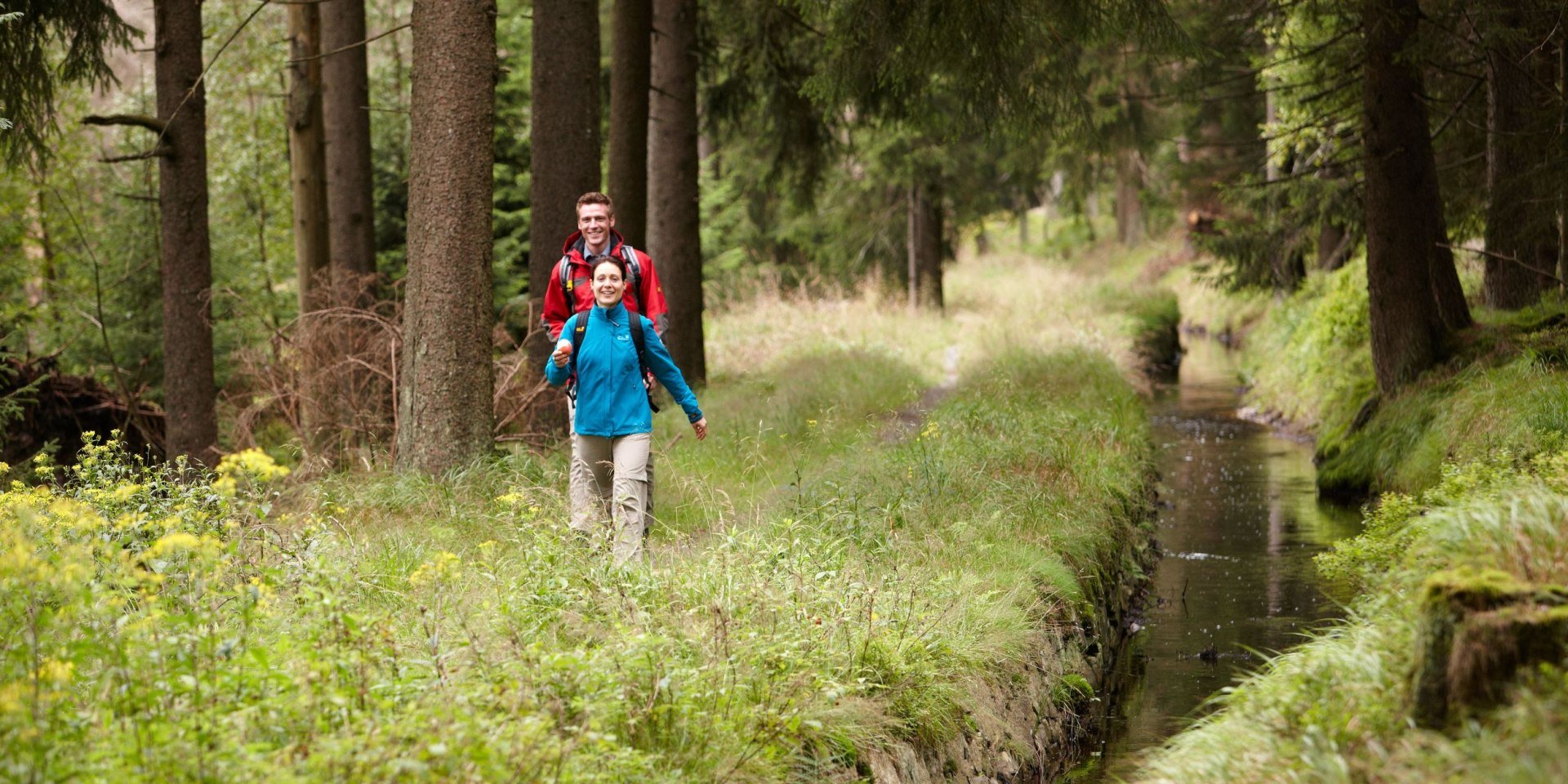By declaring it a Cultural and Natural Heritage Site, the UNESCO Committee honoured the Upper Harz Mountains Regale Water Management System as one of the world’s largest pre-industrial energy supply systems.
Cistercian monks from Walkenried Monastery constructed the first pond and ditch systems in the early 13th century and miners continued to extend them over the centuries. The Upper Harz Mountains Regale Water Management System was the only power source for the mining industry in the Upper Harz Mountains region from the Middle Ages to the Industrial Age. As there were no rivers or streams high on the plateau, the miners collected water in reservoirs using a series of ditch systems extending over kilometres. From there it was routed to the mines and smelting works, where countless waterwheels drove it overground and underground. This provided the miners with energy to pump seepage water out of the mines, operate the smelting works and transport material.
The technical growth of mining in the Upper Harz Mountains was pioneering throughout Europe. The UNESCO World Heritage Site consists of 107 historical ponds, 310 kilometres of ditches and 31 kilometres of waterways. The paths alongside the ditches, which have a very gentle gradient, can be discovered without the need for serious climbing along long paths or hiking trails and, by way of reward, offer magnificent distant views over the Upper Harz Mountains National Park. Apart from the Gothic Cistercian Monastery in Walkenried, the World Heritage Site also includes the Samson Pit, which dates back to the 16th century and three smaller shafts from the 19th century.


